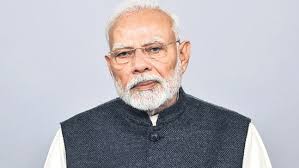India’s Prime Minister Faces Growing Discontent Amid Unmet Promises and Political Maneuvers
India’s Prime Minister, Narendra Modi, has long been considered a master of populism—using rhetoric that resonates with the masses while promoting policies aimed at enhancing the nationalistic sentiment. However, in recent months, Modi’s leadership is facing increasing scrutiny, as dissatisfaction with his government is growing, especially among his base of supporters.
Many critics now argue that Modi’s populist approach has begun to backfire, as the public’s expectations of him remain unmet. From economic promises that have not materialized to controversial political maneuvers, disillusionment is rising among citizens who once viewed him as the savior of India’s future.
The Economic Strain
One of the key pillars of Modi’s early popularity was his promise to rejuvenate India’s economy. As a former Chief Minister of Gujarat, he was widely perceived as an economic reformer who would bring prosperity to the country. However, despite initial enthusiasm, many of his promises have not come to fruition.
India’s economy is struggling with rising unemployment rates, high inflation, and a stagnating job market. The government’s attempts to address these issues, such as the demonetization initiative in 2016 and the Goods and Services Tax (GST) rollout, have been met with criticism for causing more harm than good. While Modi’s supporters praise his ambitious vision, critics argue that the economic policies have disproportionately affected the poor and working-class citizens.
The Unraveling of the Populist Persona
Modi’s populist image has been an integral part of his success in rallying support, but it is now being questioned. His rhetoric has often centered around the idea of ‘Hindu nationalism,’ and he has managed to position himself as the face of India’s growing political and cultural assertion. His government has been accused of marginalizing religious minorities and taking authoritarian steps to silence dissent.
This approach has alienated some of the very voters who once saw him as the answer to India’s challenges. For example, his handling of the farmers’ protests in 2020-2021—where millions of farmers took to the streets in opposition to agricultural reforms—exposed cracks in his once-unified political base. Although the government eventually repealed the controversial farm laws, the incident revealed a disconnect between Modi and India’s rural population, who are key to his political success.
Electoral Setbacks
In addition to economic challenges, Modi has faced significant electoral setbacks that threaten his grip on power. In recent state elections, particularly in key regions such as Uttar Pradesh and Punjab, Modi’s Bharatiya Janata Party (BJP) has seen a decline in its popularity. While the party remains strong at the national level, these regional losses have cast doubt on its ability to maintain dominance in the future.
Moreover, Modi’s alliance with regional parties, often criticized for being opportunistic, is beginning to show signs of strain. As regional leaders grow more assertive, they are increasingly less willing to remain loyal to Modi’s leadership. Some political analysts argue that Modi’s reliance on these alliances may be a double-edged sword, as they may eventually turn against him if his popularity continues to wane.
Internal Criticism and Dissent
As discontent spreads, even members of Modi’s own party have started to voice their concerns. Within the BJP, there has been a growing sense of unease among some of its senior leaders, who feel that Modi’s leadership is becoming more centralized and less inclusive of diverse opinions. This internal dissent could lead to a realignment of political forces within the party, further weakening his grip on power.
Looking Ahead: The Future of Modi’s Leadership
Despite the growing criticisms, Modi remains a formidable political figure. His party, the BJP, still commands a significant portion of India’s political landscape, and his popularity with certain sections of the electorate remains intact. However, with the 2024 general elections approaching, it is unclear whether Modi can maintain his hold over the country in the face of growing economic challenges, political opposition, and increasing public disillusionment.
The next few years will be crucial for Modi and his political legacy. Whether he can successfully navigate these turbulent waters, repair the cracks in his populist facade, and address the pressing issues of unemployment, inflation, and social unrest will determine whether his leadership endures or falters.





